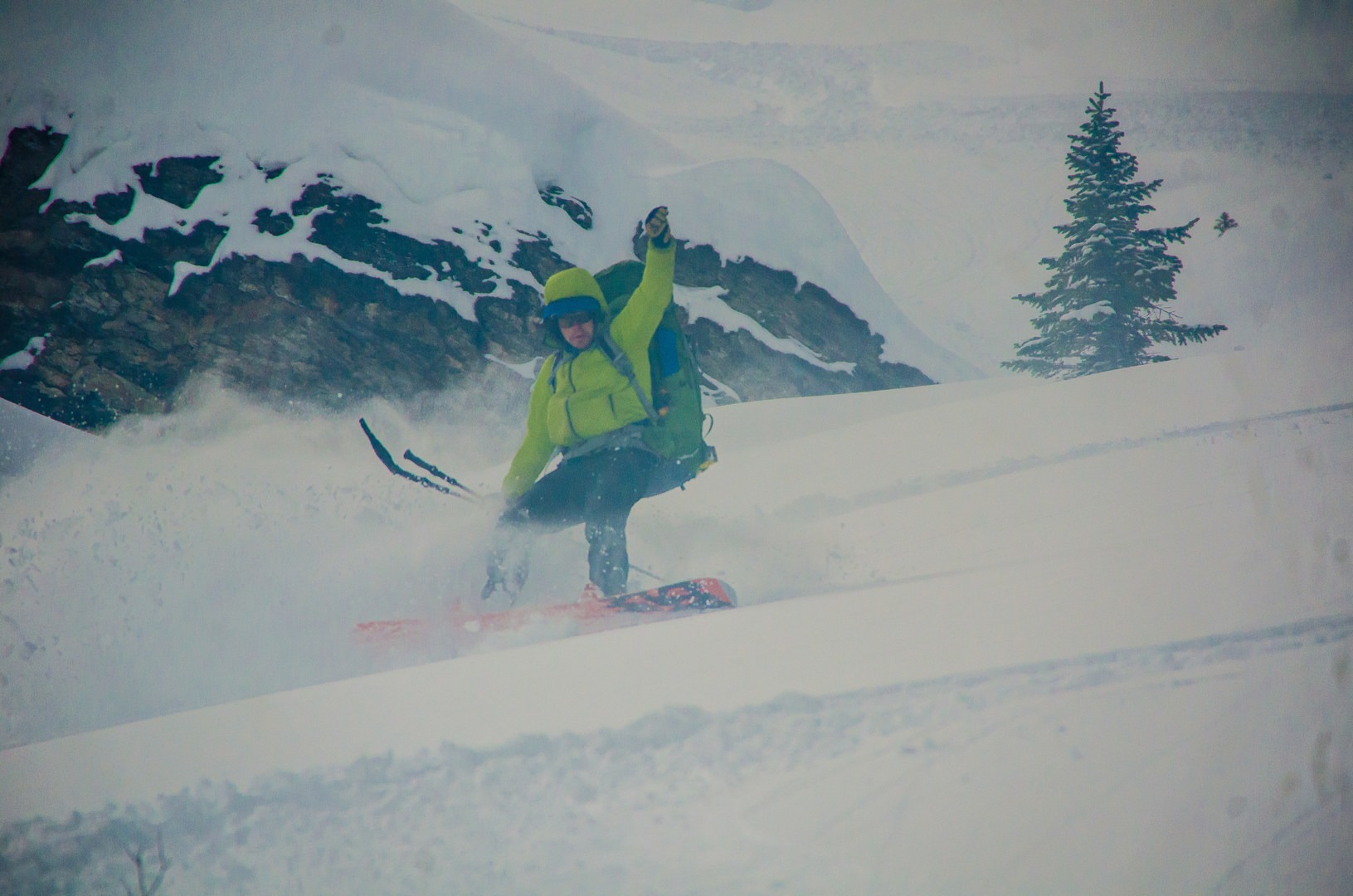You are here
In January 2017, a snowboarder triggered an avalanche while recording with his GoPro in the Mount Brew area of British Columbia. Luckily he was able to deploy his airbag in time and survived. When the video surfaced, it quickly went viral. The media and social media praised the value of airbags, others wrote detailed evaluations, but what many failed to mention was just how many errors were made in the space of 1:35. This is an excellent case study to look at dangerous features and terrain recognition—and to remind ourselves that when sh*t hits the fan, errors are easy to make.
First and most important: the avalanche forecast on this date called for considerable risk in the alpine. Wind slabs from solar radiation, high winds, and no recent snow were the main dangers, common occurrences during a prolonged high pressure system on the West Coast.
Learning Opportunity 1
The snowboarder begins heading toward ripples in the snow. These ripples, also called "sastrugi," mean that there is a hard pack of snow on the surface, perhaps deeper, and it's a telltale sign of a hard wind slab. In some conditions these can be a hard slab on top of a softer slab; sometimes it runs to the ground. You won't know until you do a pit test like you learned in Level 1 training. If you see these on steep terrain, avoid them. Unfortunately the snowboarder doesn't notice and heads straight for it.
If you find yourself in this position, try to stop slowly. If you're on skis, gently step back toward less steep terrain, ideally somewhere with a run out. With a board, because it's harder to get back up, it's important to think strategically, and always have an exit in sight.
Learning Opportunity 2
The snowboarder performs a hard stop. He appears to stop at the tension zone of a convex role. In this tension zone, there is no supportive layer of snow downslope.
The best option here would have been to avoid this feature. If you are too late to realize your mistake, don't stop on the tension zone. Ski above the tension and consider whether performing a "ski cut" is safe. (Do not attempt a ski cut without guided supervision). The boarder should have headed for higher, less risky ground, and across the bowl there appears to be a bit of a rise in terrain.
Learning Opportunity 3
The snowboarder has opted to head right over a constriction. Had he not been able to deploy his air bag in time, he would have been dealing with deeper snow then a face slide, and he could have been pushed into rocks or trees, which can cause trauma and possibly death.
Learning Opportunity 4
The slide has stopped, and the boarder's partner comes tearing down. Rather then descending the slope that had slid, the slope that no longer has loaded snow, he chooses to ride the slope directly adjacent. While it is hard to make rational decisions in these types of dire moments, it’s worth taking note that there is a chance of this slope sliding as well. Had it triggered, it would have rolled downhill and covered the individual previously caught in the avalanche. The buoyancy of an avalanche airbag is only effective during an avalanche; in the case of a second avalanche coming down from above, the airbag would be useless, and the snowboarder would have been buried.
Level Up!
As recreational backcountry users, we should always be looking for ways to understand snowpack and how accidents happen. It's cheap, and it's a great way to build experience when you're stuck in the city all week. Online resources like Land of Thundering Snow and Cherry Bowl are superb ways to learn about how things can quickly go south.
Even better, looking around at accidents in your region and asking what could have be done better exercises your critical thinking skills. It's important not to judge. If you weren't there, you don't know all the facts, so be generous. But we can also take what facts are known and try and figure out what we can learn to do better.
There are ample other examples out there. Mountain Condition Report is a superb resource where guides discuss avalanches or conditions they've seen. Often national parks and guiding organizations will post updates on changing conditions too that can offer ample insight into what sort of dangers are out there. Be pro-active; find some hints to what you might encounter and keep your knowledge fresh.
About the author: Tam is an avalanche safety-trained recreational backcountry skier with four years of experience in the Canadian Rockies and three years in the Coast Range. Although not a professional, Tam has received Avalanche Safety Training 2. He writes to help others from a recreationalist's perspective. For safety, always consult a professional.






Comments
My middle-aged neighbor with almost zero hiking experience has recently gone on a health kick, dropped 50 pounds, and announced he's taking his entire family to summit Mt. Hood. He met a guide, he said.
As a veteran of dozens of Colorado 14ers, I very carefully explained to him (in the frozen food aisle of Trader Joe's, rather apropos) that Hood requires a little more than solid thighs and a new axe. I wouldn't touch it without current glacier travel and crevasse training and several years experience with my gear.
He listened pretty intently, I could tell none of this had even occurred to him. For F's sake, why don't people "know before they go"?
Sign In and share them.